News
Where change and progress begin — it’s always the news. Our “news” category is a window into the world of the latest events and important updates. We are always at the forefront, bringing you all the hottest and most captivating stories. Whether it's global events, scientific discoveries, entertainment, or tech news, we keep you in the loop. Come here to be the first to know what’s happening — this is your window to the world of events and information.
Economics
15
South Florida housing market is declining: what is behind the drop in condominium prices
After a decade of rapid increase in housing prices, the South Florida condominium market shows signs of cooling, signaling a potential turn in the region's multi-year housing boom.
According to new data from the Miami Association of Realtors and the Southeast Florida Multiple Listing Service, the median sale price of condos in March 2025 fell both in Miami-Dade County and Broward County. At the same time, the number of closed transactions remained below last year's level.
The numbers speak for themselves: the average sale price of a condominium in Miami-Dade dropped to $437,450 from $445,000 a year ago, while in Broward, the price declined more sharply — to $280,000 from $288,750. This represents a decrease of 1.7% and 3%, respectively.
Market analysts attribute the price decline to a number of structural issues. The most concerning is the sharp rise in ownership costs: owners face record-high insurance premiums, increased monthly fees to homeowner associations, as well as expensive assessments for necessary repairs — a problem that became particularly acute after the Surfside building collapse in 2021.
"Statistics would look much healthier if they included new construction," said the Miami Association of Realtors. "The main problem is the lack of financing and the shortage of listings in key segments."
While the condo market faces challenges, the single-family home segment is holding up better. In Miami-Dade, the average home price increased by 3.1%, reaching $670,000. In Broward, the increase was even higher — 4.6%, to $635,000.
At the same time, sales volumes in March showed a slight decline: 961 homes were sold in Miami-Dade (compared to 1,041 a year ago), and 1,062 in Broward (versus 1,084).
It is also worth noting the housing inventory — a key indicator of market balance. In Miami-Dade, the supply of homes stands at six months, signaling movement toward a more balanced market. Meanwhile, condo inventory has surged to 13.2 months, formally indicating a buyer’s market. A similar situation exists in Broward: 5.4 months for homes and 12 months for condos.
Nevertheless, despite market softening, some areas remain "hot spots." According to the association, the best market for single-family home sales in March in Miami-Dade was Cutler Bay, while Kendall leads among condos. In Broward, Sunrise and Weston are in high demand.
Experts emphasize: although the current cooling may be inevitable after years of rapid growth, fundamental demand drivers — influx of migrants, limited new construction, and South Florida's status as a global resort region — remain in place.
However, buyers are now experiencing more opportunities to negotiate for the first time in a long while. If these trends persist, 2025 could enter history as the year when South Florida began to rethink its housing dynamics.
20.05.2025
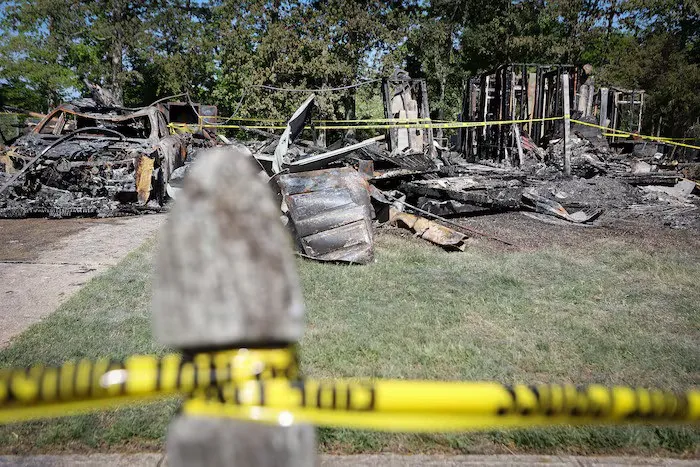
Society
20
Tragedy in New Jersey: House Fire Declared a Murder-Suicide, Neighbors in Shock
A quiet suburb of New Jersey, where neighbors are accustomed to a peaceful rhythm of life, was shaken by terrible news: a large-scale fire, which destroyed a house on Tranquility Court on Mother’s Day night, was found not to be accidental, but the result of a carefully planned act of murder and suicide. The Gloucester County Prosecutor’s Office confirmed on Tuesday that behind this tragedy, which claimed two lives, lies a disturbing story that left the community in a state of deep shock.
The fire broke out around 2:03 a.m. on Sunday, shattering the silence of a dead-end street in Washington Township. The flames were so intense that neighbors reported hearing a sound similar to an explosion. When fire crews arrived at the scene, the ranch-style house was already fully engulfed in flames. After several hours of fighting the fire, investigators entered the wrecked building and discovered a horrifying scene: the body of a woman with a fatal gunshot wound to the head and a man's body—likely the tenant—found nearby with a handgun. An assistant district medical examiner declared the woman’s death a homicide, and the man’s death a suicide caused by the fire.
The investigation uncovered troubling details: the house’s gas line had been intentionally damaged, leading to an uncontrolled leak of natural gas, and a catalyst was used inside the premises to ignite the fire. “This was not an accident, but a deliberate act that endangered the lives of neighbors,” said Tom Gilbert, chief detective of the Gloucester County Prosecutor’s Office, emphasizing that only luck prevented the adjacent houses from catching fire.
The authorities have not yet disclosed the identities of the deceased, but according to public records and sources close to the investigation, the tenant was 59-year-old Daniel Steel. Neighbors and acquaintances describe him as a friendly man who regularly helped with small tasks, such as taking out trash cans. However, behind the scenes, his life appeared to be heading toward tragedy. Nicole Ruiz, Steel’s former partner, told NBC10 that shortly before the fire, he left her his dog Billy along with food and money. In a farewell email sent before the fire, Steel wrote: “I am a terrible person. By the time you read this, I will no longer be here. Billy loves you more than anyone. Take care of yourself.” These despair-filled words became the last hint of his intentions.
Neighbors, who woke up on Sunday to the roar and smell of smoke, are still in shock. Susanna Pinto, who lives nearby, recalls initially believing the fire was a tragic accident. “I was convinced it was an unfortunate incident,” she said, her voice trembling with emotion. “How wrong I was.” This week, Tranquility Court, now sounding like bitter irony, attracts hundreds of curious onlookers. They pass by the charred remains of the house, stop to photograph the ruins, and silently walk back, carrying a heavy sense of loss.
According to insider information, investigators continue to examine Steel’s motives, exploring his personal life and possible psychological triggers. While the community mourns the lost lives, many questions remain: could this tragedy have been prevented, and why did the man, whom neighbors considered “one of their own,” resort to such desperate measures? For those living on Tranquility Court, these questions will remain unanswered for a long time, and memories of that terrible night will forever alter their perception of safety in what was once a cozy corner of New Jersey.
20.05.2025
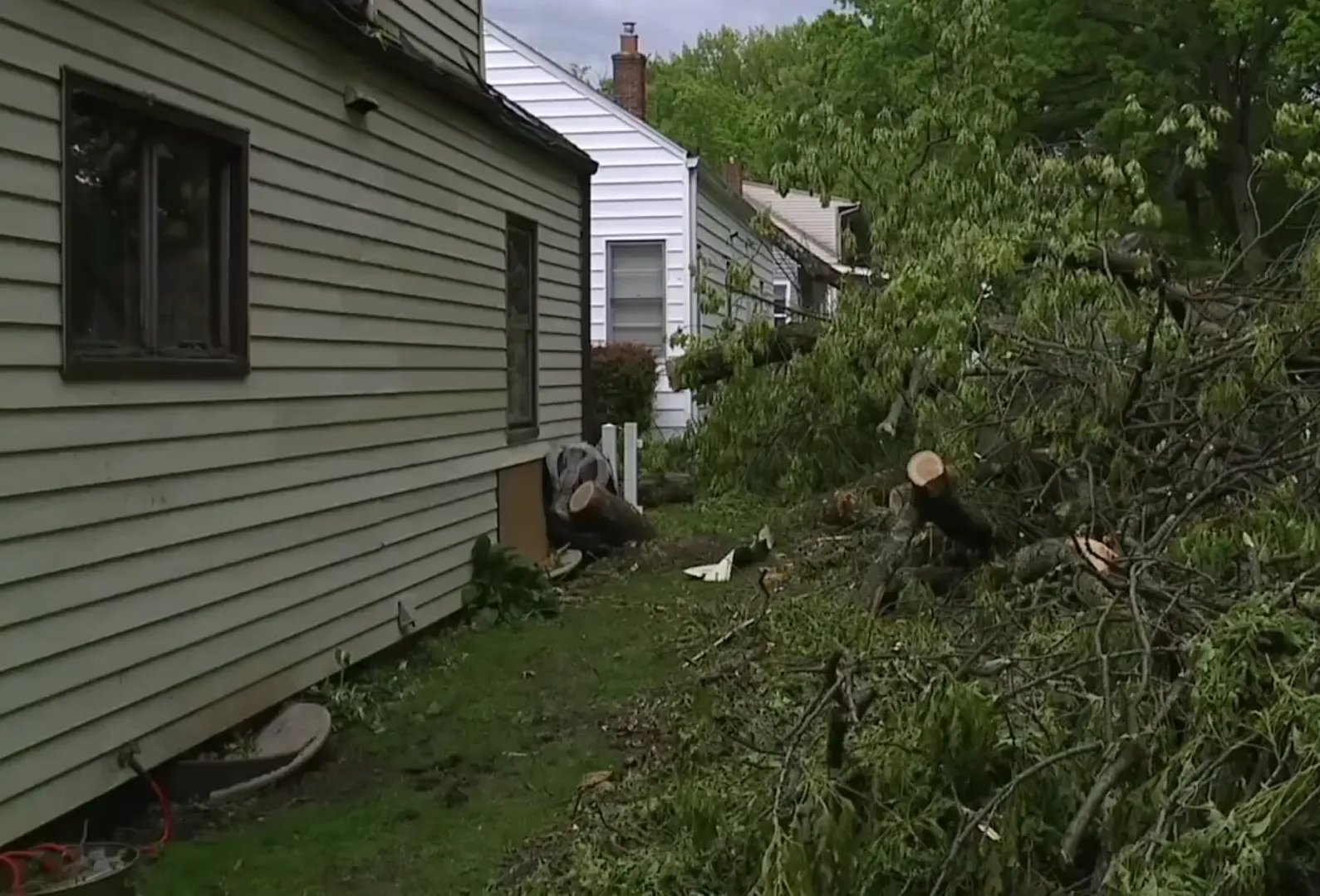
Environment
28
Night Storm in Kuyahoga Falls: Tree Penetrates House, but Family Saved Miraculously
CUYAHOGA FALLS, Ohio — In the pre-dawn darkness, as a storm with a roar swept through Northeast Ohio, Brenda and Henry Ryan's house in Cuyahoga Falls became the arena of nature's fight with destiny. Around three in the morning, a huge tree from a neighbor's yard, torn out by the fierce wind, punched through their roof, leaving ten holes, shattered windows, and a broken air conditioner. But amid the debris and chaos, the Ryan couple gives thanks to the heavens for a miracle: their 14-year-old grandson, whose room was wrecked, was safe, and they themselves narrowly escaped tragedy. This night, which left tens of thousands of residents in the region without electricity, served as a reminder to the Ryan family of life's fragility and the power of gratitude.The storm that changed everythingThe storm, which hit the region with winds up to 70 miles per hour, left a trail of destruction: fallen trees, downed power lines, and thousands of households in darkness. In Cuyahoga Falls, a quiet suburb of Akron where cozy houses line green streets, no one was prepared for such a force of nature. For Henry Ryan, 68, a retiree, the moment when the tree broke through the roof was like an explosion. “I thought it was the end,” he recalls, voice trembling from the shock. “The wind howled, then—bang, like an explosion. I still marvel that my heart held up.”The fallen tree not only shattered the roof but also burst into their grandson's room, tossing his bed across the entire bedroom. “The branch went where his head should have been,” says Brenda Ryan, 65, with tears in her eyes. “If he had been home, I don't know if I would be talking to you now.” The boy, who was staying at a friend's place, narrowly escaped danger, but the scene in his room—cracked walls, scattered belongings—became a painful sight for Brenda. “It took me a few minutes to recover,” she adds.A miracle amid the debrisAmong the wreckage, Brenda saw a sign that brought her comfort. In her grandson's room, where everything was turned upside down, a crucifix and a photograph of his late mother remained untouched. “I believe she was protecting him,” Brenda says, her voice filled with quiet confidence. “There are things stronger than a storm.” For the couple who lost a daughter a few years ago, this moment became not just a coincidence but a symbol of hope.The Ryan family’s house, a modest two-story home where they raised children and hosted grandchildren, now needs serious repairs. The roof is leaky, the air conditioner is shattered, and windows across the house resemble a glass mosaic. “It's crazy how one tree can cause so much damage,” says Henry, inspecting the debris in the yard. “But we are alive, and that’s the main thing.” The insurance company is already assessing the damage, but Brenda fears that without air conditioning, summer will be unbearable. “We’ll survive,” she adds. “The most important thing is that we are together.”The community unitesThe community's response was immediate. Despite the chaos caused by the storm, the local fire department dispatched a contractor to the Ryan house, arriving at 3 a.m. “We were sitting at the dining table, drinking coffee and filling out paperwork,” Brenda recalls warmly. “In moments like these, you realize that neighbors are more than just people nearby.” The contractor temporarily covered the holes in the roof with a tarp, but full repairs are expected to take until July.Cuyahoga Falls, like the entire Northeast Ohio, awoke in a state of recovery. According to FirstEnergy, tens of thousands of customers in the region remain without power, and in Summit County, which includes Cuyahoga Falls, more than 20,000 households have experienced outages. Fallen trees blocked roads, and utility crews are working around the clock to restore the lights. “This isn’t our first storm, but it’s one of the worst,” says Mayor Don Walters, who is coordinating the relief efforts.Broader context: Climate and vulnerabilityThis storm is not just a natural whim, but part of a disturbing trend. According to the National Weather Service, extreme weather events in Ohio are becoming more frequent due to climate change, which intensifies thunderstorms and wind gusts. “We see more storms with such strength,” notes meteorologist James Crosby from Cleveland. “And communities like Cuyahoga Falls are not always prepared.” Insider information suggests that local authorities are considering investments in protective tree planting and upgrading the electrical grid, but budget limitations delay these plans.For the Ryans, the storm also revealed vulnerabilities in their home. “We never thought that a neighbor’s tree could be a threat,” says Henry. “But now we will reconsider everything.” The couple already plans to discuss with neighbors trimming old trees, and Brenda jokes that she might plant new ones, “but farther from the roof.”Life after the stormWhile repair crews assess the damage and insurance agents fill out forms, the Ryans are looking for ways to return to normal life. Their backyard, once a favorite spot for family barbecues, is now strewn with debris, and the bird feeders Brenda carefully filled are destroyed. “I’ll figure out how to feed my birds,” she says with a smile. “They count on me.”But behind their resilience lies a deeper truth: the storm left not only material losses but also emotional scars. “When you see your home, your refuge, falling apart in seconds, it changes you,” Brenda admits. “But we don’t give up.” Their story reflects the spirit of Cuyahoga Falls, a community that, despite the blows of nature, holds together, grateful for the miracles and preparing for new challenges.As Ohio recovers from the night storm, the Ryans remind everyone: in a world where nature can be merciless, the greatest strength is love, faith, and the ability to value what remains unbroken. Their house will be restored, but the memory of the guardian angel who saved their grandson will stay forever.
19.05.2025

Environment
18
Weather forecast: Monday, May 19, rain and wind return to Ohio
During the week from May 19 to 25, 2025, in Ohio, cool and unstable spring weather is expected. The beginning of the week will be mostly dry, but from Tuesday there may be short-term showers, and from Friday — . Temperatures will fluctuate from +17 °C to +22 °C, with nights remaining cool.Weekly forecast:Monday, May 19, is expected to be mostly sunny with no precipitation. Daytime temperatures will rise to +20 °C, and at night will drop to +10 °C. Tuesday, May 20, will retain clear weather with slight cloudiness. Temperatures during the day will reach +21 °C, and at night will fall to +11 °C.Wednesday, May 21, will be sunny in the morning, but in the afternoon clouds (cloudy) will appear with possible short-term showers. The maximum temperature will reach +22 °C, and at night will be around +12 °C.Thursday, May 22, is expected to be , especially in the second half of the day. Daytime temperatures will be +21 °C, and at night will decrease to +11 °C.Friday, May 23, forecasts variable cloudiness with periodic clearings. Daytime temperatures will rise to +20 °C, and at night will stay at +10 °C.Saturday, May 24, may have short-term showers and wind gusts up to 30 km/h. The maximum temperature will reach +19 °C, and at night around +9 °C.Sunday, May 25, will be mostly cloudy, with no significant precipitation. Daytime temperature will be +17 °C, and at night around +8 °C.Sunrise / sunset times on Monday:Sunrise: 6:05 AMSunset: 8:45 PMSummary forecast in brief:Monday: Mostly sunny. | Max temperature: +20 °CTuesday: Clear, slight cloudiness. | Max temperature: +21 °CWednesday: Cloudy, short-term showers. | Max temperature: +22 °CThursday: Rainy weather. | Max temperature: +21 °CFriday: Variable cloudiness. | Max temperature: +20 °CSaturday: Short-term showers, wind gusts. | Max temperature: +19 °CSunday: Cloudy, no precipitation. | Max temperature: +17 °CThroughout the week, cool and unstable spring weather is expected. The beginning of the week will be mostly dry, but from Tuesday, short-term showers may occur, and from Friday — thunderstorms and strong gusts of wind. It is recommended to plan outdoor activities for the early days of the week and to monitor updates to the forecast.
19.05.2025

Society
44
Tragedy That Didn’t Happen: Third Grader Brought a Gun to School in Ohio, Threatening Classmates
On Friday, a scene unfolded at Saunder elementary school in Stark County that could have become yet another tragedy in the long list of American school gun incidents. A ten-year-old third-grader brought a loaded .45 caliber pistol in his backpack and threatened classmates and school staff, causing the community of this quiet town to confront painful questions about children's safety and access to firearms. Thanks to the quick response of the school and police, a disaster was averted, but the incident left an unsettling sense of vulnerability.
Around 12:30 p.m., Jackson police received reports that a student at Saunder elementary school had a loaded weapon. According to Major Jim Monigold, officers immediately arrived on the scene and confiscated the pistol from the third-grader after the school counselor was informed of the weapon. Further investigation revealed that the boy not only brought the pistol but also threatened another student and the counselor, creating an atmosphere of fear in the classroom.
"This is not the kind of call any police officer or school principal wants to receive," Major Monigold said at a press conference, his voice filled with restrained anger. The boy was charged with causing panic and unlawful possession of a deadly weapon, although given his age, the case will probably be handled in the juvenile justice system. Police are not disclosing how the child gained access to the gun, but sources close to the investigation suggest that the weapon may have belonged to a family member.
Swift Response and Safety Protocols
Saunder School, located in a peaceful neighborhood of Massillon, responded exemplary. Students and staff adhered strictly to safety protocols, allowing the threat to be isolated without panic or injuries. "Everyone acted as they were trained," Major Monigold noted. "That saved the situation." The school principal sent a letter to parents assuring them that all children were safe but also urged open conversations at home about the seriousness of such incidents.
However, beyond official statements, anxiety is growing within the community. Massillon, typical Midwestern town with strong family values, is unaccustomed to associating its third-graders with loaded guns. "It breaks my heart," says Sarah Thompson, mother of two Saunder students, who was standing by the school fence as police led the boy away. "How does a ten-year-old get to the point of bringing a gun and threatening with it?"
Deeper Issues: Access to Guns and Children's Mental Health
This incident is just the latest in a string of alarming events highlighting the issue of children's access to firearms in America. According to the CDC, over 1,500 children and teenagers in the U.S. died from gunshot wounds in 2023, with a significant number linked to unsecured firearm storage at home. In Ohio, where gun laws remain some of the most liberal in the country, such incidents only intensify the debate between Second Amendment advocates and supporters of stricter controls.
According to insider sources, police are investigating whether the gun was properly registered and how it ended up in the child's hands. Local activists advocating for safe storage of firearms are already calling for expanded educational programs for parents. "This isn't about banning guns," says Emily Clark, organizer of Moms Demand Action in Massillon. "It's about making safe locks and storage as routine as buckling your seatbelt."
No less urgent is the issue of children's mental health. School psychologists who spoke with us note that the pandemic, economic instability, and the rise of violence in media have increased anxiety among students. "Children see guns in the news, in video games, hear about shootings," says Dr. Linda Harris, a counselor in Stark County schools. "For some, it becomes a way to gain attention or feel in control." Whether the third-grader had issues at home or school remains unknown, but the investigation will likely delve into his environment.
Community in Reflection
For Massillon, where school football games and church fairs set the rhythm of life, this incident was a cold shower. Parents picking up children on Friday appeared bewildered, and discussions erupted in local social media groups: calls for metal detectors in schools, and demands to strengthen mental health support for students. "We thought our school was a safe place," says Thompson, clutching her daughter's hand. "But now I’m not so sure."
The city authorities and school administration plan to hold public hearings to discuss additional safety measures. Sources suggest they are considering increasing crisis response training and collaborating with local law enforcement on prevention programs. But for many residents of Massillon, the key question remains unanswered: how did a community that teaches kids to read and write let one of them get a hold of a pistol?
While police continue their investigation, Saunder School is returning to its normal rhythm but with a noticeable undercurrent of anxiety. This incident, which did not result in casualties, is not only a warning but also a call to action. In a country where guns and children's backpacks are increasingly linked stories, Massillon reminds us: children's safety is not just a protocol but a shared responsibility that requires immediate change.
17.05.2025
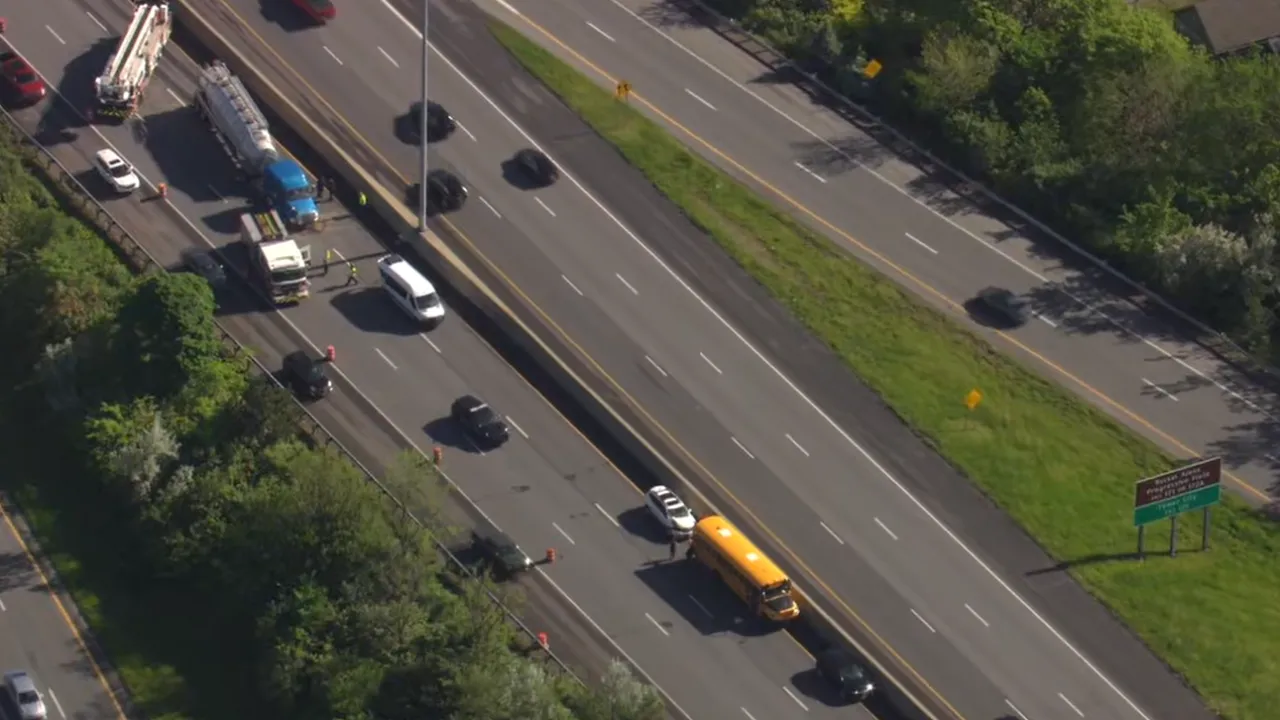
Transport
28
School bus accident on I-71 causes congestion in downtown Cleveland, but no casualties
On Friday morning, a school bus from the Cleveland Metropolitan School District (CMSD) was involved in a traffic accident on one of the busiest sections of the I-71 highway, causing significant delays for morning commuters. The incident, which occurred before 7:30 a.m., coincided with rush hour and led to the complete closure of several lanes near the Innerbelt Bridge, — confirmed district spokesperson Janice Edwards.According to preliminary reports, the bus collided with the rear of another vehicle at the junction of I-71 and I-90 — an area where even minor incidents have a domino effect, instantly slowing traffic in the city center. Despite the force of the impact and the morning traffic congestion, no students were in the bus at the time of the accident, and no one was injured."We are grateful that the situation did not turn into a tragedy, — said Edwards. — Our drivers undergo regular safety training, and the fact that everyone remained unharmed reflects the effectiveness of these measures".Emergency services promptly arrived at the scene. All lanes on I-71 near the Innerbelt Bridge were temporarily closed, and traffic on I-90 was also partially halted due to restrictions at the interchange with I-71. By 9 a.m., according to the Ohio Department of Transportation (ODOT), traffic was restored on most lanes, although residual congestion persisted for another hour.This incident serves as a reminder of the vulnerability of urban infrastructure to unexpected disruptions, even if they do not cause physical injuries. According to CMSD representatives, the bus was on a standard route and was heading for maintenance after the morning shift. The driver followed all protocols after the incident, including activating emergency signals and notifying dispatch services.However, the incident has already sparked a new wave of discussion in the municipality regarding the feasibility of expanding traffic monitoring systems on key Cleveland highways — especially in high-traffic intersection zones near school routes.“Every morning, thousands of parents rely on the safe delivery of their children to school. Such cases remind us of the importance of investing in fleet upgrades, infrastructure, and early response systems,” — said one city council member who chose to remain anonymous due to the ongoing investigation.While the technical inspection of the bus is ongoing, CMSD has promised to publicly release the findings following an internal assessment. The district’s press service also noted that other school routes remain unchanged, and bus services are operating as scheduled.
17.05.2025
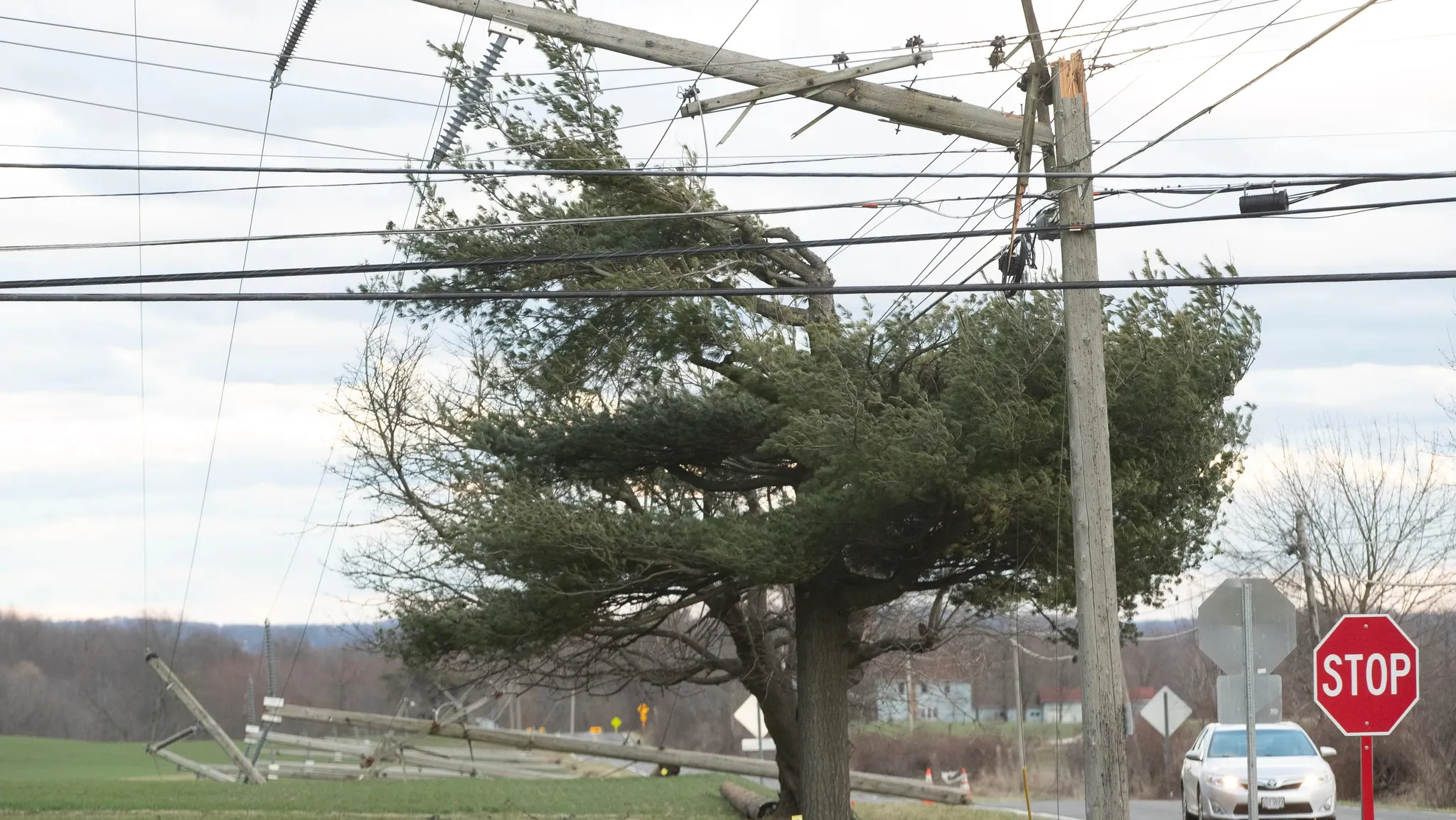
Environment
38
Storm paralyzes Northeast Ohio: Almost 80,000 residents without electricity
AKRON, Ohio — On Friday evening, a powerful thunderstorm swept through Northeastern Ohio, leaving darkness, fallen trees, and nearly 80,000 households without electricity. Summit County, the heart of the region, was hit hardest: 45,867 subscribers lost power, and the chaos caused by the storm is felt from Cleveland to rural corners of Wayne County. FirstEnergy, the region’s main electricity provider, is battling the aftermath, but for many residents, this night became a test of resilience amid natural fury.As of 12:35 Saturday, according to FirstEnergy, the scale of outages is staggering: 10,482 customers in Stark County, 7,896 in Portage, 4,014 in Wayne, 2,195 in Richland, 2,399 in Cuyahoga, 1,597 in Medina, and 1,210 in Lorain are still without power. A storm warning issued by the National Weather Service until 4:00 a.m. Saturday covered Stark, Mahoning, Medina, Summit, Trumbull, and Portage counties, warning of strong gusts, lightning, and possible local floods.Merciless StormThe storm, which came from the west, brought winds up to 70 miles per hour, ripping up trees and snapping power lines. In Akron, the largest city in Summit County, streets were covered with branches, and in some neighborhoods, debris blocked roads. “It was like something out of an apocalyptic movie,” says Linda Carter, a Canton resident whose house lost power after a transformer near her home exploded from a lightning strike. “Flashes, thunder, and then — darkness.”According to insider information, FirstEnergy has mobilized additional crews from neighboring states, but restoration may take time due to the scope of damage. “Some lines are literally torn apart,” a company source reported. “We are working around the clock, but in the most remote areas, people will have to wait until Sunday.” In Cuyahoga and Summit, where electricity has already been restored to thousands of subscribers, progress is noticeable, but in Stark and Portage, the situation remains critical.Communities in Darkness but Not Without HopeFor residents of Northeast Ohio, where harsh winters and sudden storms are not uncommon, power outages are a familiar trial. However, the scale of this storm’s impact has caused many to reassess their preparedness. In Barberton, a suburb of Akron, locals queued up for generators and batteries, while volunteers distributed water and blankets at community centers. “We’re sticking together,” says James Wilson, an organizer of aid in Stark County. “But going without light and heat in May — that’s no joke.”Akron Mayor Den Gorirgan urged residents to be patient, promising that the city is coordinating efforts with FirstEnergy and local rescue services. “This isn’t our first storm, and it won’t be the last,” he said at a press conference. “But we will get through this together.” Meanwhile, in Cleveland, where fewer people have been affected by outages, Cleveland Public Power has reported localized disruptions that are already being addressed.Climate and Infrastructure ChallengesThis storm is not just a natural disaster but a mirror of broader problems facing Ohio. Meteorologists say that severe thunderstorms are becoming more frequent due to climate change, which amplifies extreme weather events. At the same time, Ohio’s aging grid infrastructure, much of which was built in the mid-20th century, is increasingly strained. “We haven’t invested enough in modernization,” notes Eric White, an energy analyst from Cleveland. “Every new storm exposes that vulnerability.”Rumors circulate in local government circles about plans to upgrade the power grid, but budget constraints and political disagreements slow progress. “This isn’t a matter of a year or even a decade,” White adds. “But if we don’t start now, such outages will become our new normal.”Looking to the FutureWhile FirstEnergy crews clear fallen trees and tangled wires, Ohio residents demonstrate their characteristic resilience. In Canton, the school gym has been transformed into a temporary shelter where neighbors share food and stories. In Medina, volunteers deliver lanterns to the elderly. These small acts of solidarity serve as a reminder that even in the darkest times, a community can shine.But beyond these touching moments lies a harsh truth: Northeast Ohio, like many regions of America, is at a crossroads. Will this storm serve as a catalyst for change, or just another chapter in the ongoing struggle with nature and aging infrastructure? As residents recharge their flashlights and wait for power to return, the answer remains as uncertain as the May skies over Ohio.
17.05.2025
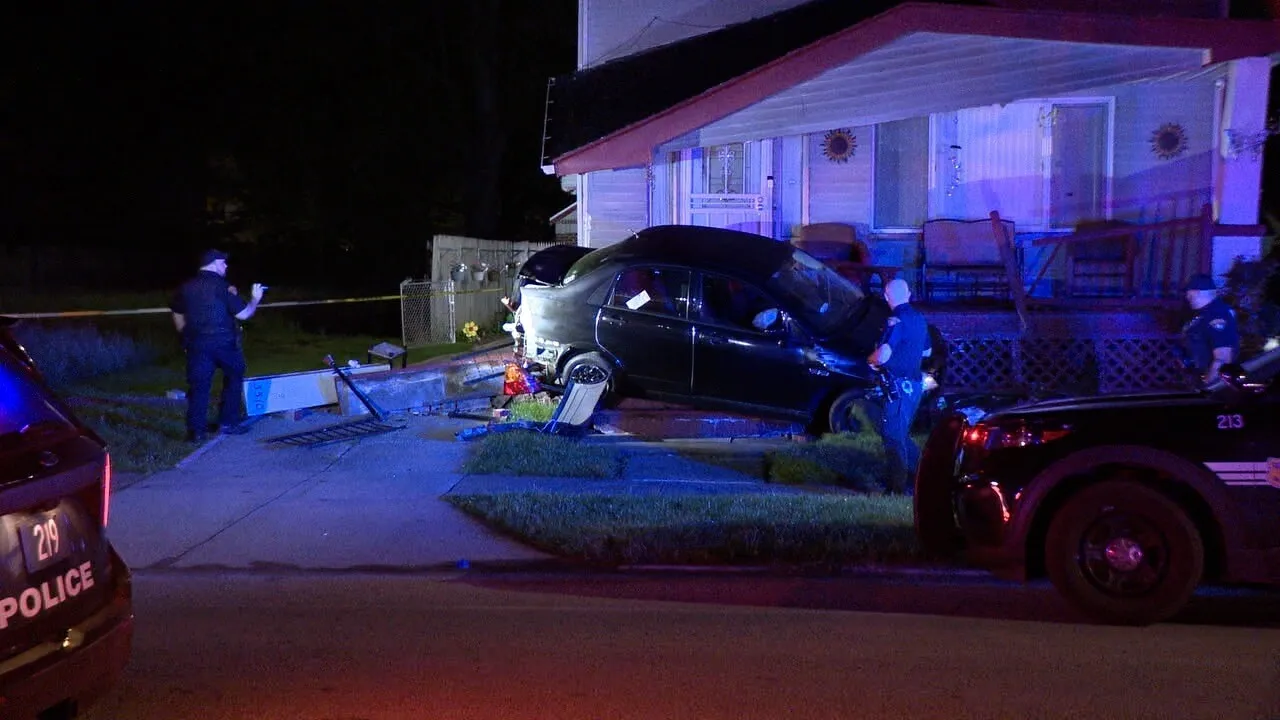
Transport
38
Car crashes into house in Cleveland, leaving driver on the brink of life and death
CLEVELAND, Ohio — In the darkness before dawn, as Western 44th Street in Cleveland was sleeping in silence, the peaceful neighborhood was shattered by a deafening roar. Around 3:15 a.m., a 25-year-old man, driving at reckless speed, lost control of his vehicle, crashed into a tree, and then rammed into a house at the corner of Daisy Avenue. The accident, leaving the house with gaping holes in its walls and the driver trapped beneath the wreckage, served as a stark reminder of life's fragility in a city battling traffic tragedies.
Cleveland police, who arrived at the scene within minutes, found a horrifying sight: a battered car half-embedded in the brick wall of the house and the driver pinned under metal debris. Rescue workers needed specialized tools to extract the young man, who was ultimately rushed to MetroHealth Hospital in critical condition. "It's a miracle he's still alive," said one officer on the scene, whose name was not disclosed, describing the chaos that reigned at the intersection.
The house, a modest single-story structure, sustained significant damage: the facade was shattered, windows broken, and interior walls partially collapsed. The residents, a family of three, miraculously escaped injury, though their home is now uninhabitable. "We woke up to a sound like an explosion," recounted Maria Gonzalez, a neighbor who watched as rescuers worked under flashlight illumination. "It could have ended much worse."
Shadows of the Night: What Led to the Crash?
The police have not yet disclosed the driver's name, citing an ongoing investigation, but preliminary data indicate high speed as a key factor. According to sources close to the investigation, there were no skid marks on the road, which may suggest a loss of control or driver distraction. Blood alcohol or drug tests have not yet been completed, but law enforcement circles are whispering about possible fatigue or recklessness, considering the late hour.
Western 44th Street, a narrow artery in the area known as Clark-Fulton, is not new to traffic incidents. Local residents have complained for years about speeding and inadequate lighting. "People race here as if it's a highway," said Juan Rodriguez, who lives two blocks from the scene. "We requested speed bumps, but the city doesn't listen." According to Cleveland's Department of Transportation, at least 12 accidents have been recorded in this district in 2024, though none as dramatic as this one.
The Community in Shock: Searching for Answers
For Clark-Fulton, a working-class neighborhood with a predominantly Latino population, this accident is more than just news — it's a blow to their sense of safety. Residents gathered at the wrecked house in the morning looked bewildered, sharing stories of previous incidents. "This is our home, our neighborhood," said Gonzalez, clutching a cup of coffee. "We have nowhere to go, but now we're afraid for our children."
The city authorities have already promised to assess the structural integrity of the house and provide temporary housing for the affected family. But for many in Cleveland, this incident raises broader questions: about road safety and social issues driving young people to risky behavior. Insider sources say the local council is considering installing additional speed limit signs in the area, although budget constraints may delay these plans.
A City That Doesn't Sleep But Is Losing Vigilance
Cleveland, a city proud of its resilience, is once again forced to reflect on the cost of safe streets. The crash on Western 44th is not just the story of one driver or one house, but a reflection of systemic challenges: underfunded infrastructure, a lack of preventive measures, and a culture where speed sometimes outweighs caution. While the 25-year-old man fights for his life in intensive care, and a family loses their home, the Clark-Fulton community awaits not only answers but action.
"We can't just pray that it doesn't happen again," said Rodriguez, looking at the debris scattered across the lawn. "We need changes, and we need them now." In this city that never sleeps, this night became a painful reminder: vigilance is not a luxury but a necessity, without which Cleveland risks losing more than just brick walls.
16.05.2025
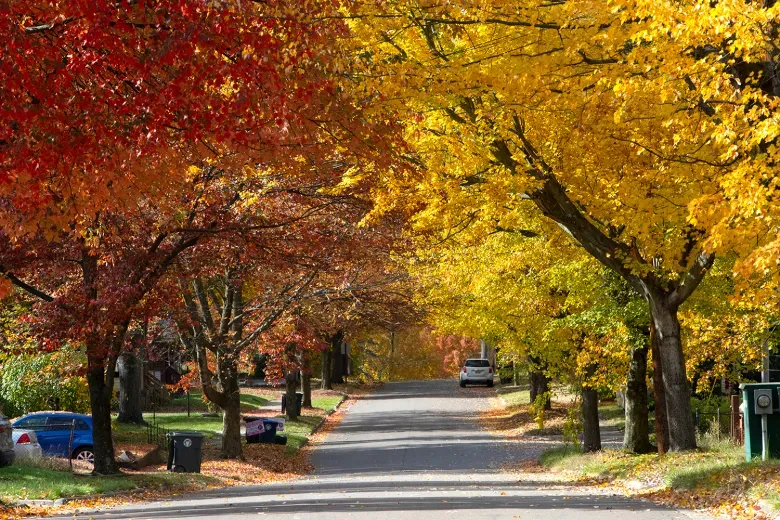
Environment
22
Akron Comes Alive: 1,800 Trees to Revitalize Neighborhoods and Uplift Community Spirit
AKRON, Ohio — This spring, Ohio's industrial heart beats to a new rhythm: the city of Akron has launched an ambitious campaign to plant 1,800 trees to revive its most vulnerable neighborhoods and restore a green soul to the urban landscape. Focused on the Kenmore, Summit Lake, and Eastern Akron areas, this initiative is not just about greening, but a strategic step to improve quality of life, increase property values, and combat environmental challenges. In a city where asphalt often dominates over nature, these trees represent hope for a greener, healthier, and more prosperous future.
Under the gentle spring sun, crews of arborists led by city arborist Matthew Knoll are transforming bare streets into green corridors. Lindsay Avenue, previously devoid of trees, is now adorned with young saplings, and oaks have appeared on Brooklands Drive at the request of local families. “We see a direct correlation: more trees — higher property values; fewer trees — lower,” explains Knoll, whose enthusiasm is contagious. According to him, neighborhoods with the lowest levels of tree cover, such as Kenmore or Eastern Akron, also have the lowest housing prices, and the city aims to address this inequality.
The project, funded from the city budget, offers homeowners free planting, care, and even removal of trees if necessary. Residents can request a tree via the 311 hotline, the website akronohio.gov/311, or a mobile app, choosing local varieties like northern red oak, serviceberry, or sugar maple. “We want people to feel involved,” Knoll says. “Some fear they will have to pay for a tree, but this is our gift to the city.” Residents such as Bill Lyons from Highland Square are delighted. “When we found out a oak would be planted on our lot, it felt like a gift from fate,” he shares, glad that the city chooses trees that are safe for sidewalks and streets.
Insider information suggests the initiative has deeper roots. City officials, concerned about ecological issues, aim not just to beautify streets but also to combat climate change. Data shows that Akron's trees have already absorbed 1.2 million pounds of pollutants and 70,113 tons of carbon dioxide, as well as retained 255 million gallons of stormwater, easing the burden on the sewer system. In areas where asphalt absorbs solar heat, trees reduce temperatures, making summer days more comfortable and lowering air conditioning costs.
However, not all residents support the project immediately. Some worry that trees will complicate lawn care or damage infrastructure. Knoll assures that the city carefully selects species and planting locations to prevent problems. “We’re not just planting trees; we’re building the future,” he says, dreaming of the day when Kenmore or Summit Lake will become green oases with a thriving economy.
For Akron, a city experiencing economic ups and downs, this initiative is more than just greening — it’s an investment in health, well-being, and community pride. Residents like Lyons see it as a sign: authorities are working for the people. “It’s not just about trees,” he says. “It’s hope for a better tomorrow.” As young saplings take root, Akron reminds everyone: even in America’s industrial heart, there’s room for a green miracle.
16.05.2025